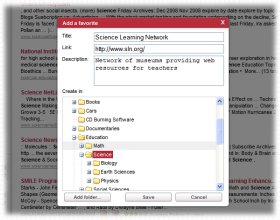|
Education
Web
Viewing 1-4 of 4 total results
information from a variety of graphic organizers including timelines, charts, schedules, tables, diagrams, and maps in grade-appropriate sources (ELA-5-M6) Ninth Grade Reading and Responding Standard 1: 1. Extend basic and technical vocabulary using a variety of strategies, including: •...
1
0
information from a variety of graphic organizers including timelines, charts, schedules, tables, diagrams, and maps in grade-appropriate sources (ELA-5-M6) Ninth Grade Reading and Responding Standard 1: 1. Extend basic and technical vocabulary using a variety of strategies, including: • use of context clues • use of knowledge of Greek and Latin roots and affixes • use of denotative and connotative meanings • tracing etymology (ELA-1-H1) 2. Identify and explain story elements, including: • the author’s
34
0
http://www.doe.state.la.us/lde/uploads/3906.pdf#page=34
www.doe.state.la.us/lde/uploads/3906.pdf#page=34
information from a variety of graphic organizers including timelines, charts, schedules, tables, diagrams, and <span class="highlight">maps</span> in grade-appropriate sources (ELA-5-M6) Ninth Grade Reading and Responding Standard 1: 1. Extend basic and technical vocabulary using a variety of strategies, including: • use of context clues • use of knowledge of Greek and Latin roots and affixes • use of denotative and connotative meanings • <span class="highlight">tracing</span> etymology (ELA-1-H1) 2. Identify and explain story elements, including: • the author’s
CCA 4.1 Elementary Arts and Humanities AUGUST 2006 Bold – State Assessment Content Standard 19 Italics – Supporting Content Standard Processes in the Arts There are three distinctive processes involved in the arts. These processes are creating new works, performing works for expr...
1
0
CCA 4.1 Elementary Arts and Humanities AUGUST 2006 Bold – State Assessment Content Standard 19 Italics – Supporting Content Standard Processes in the Arts There are three distinctive processes involved in the arts. These processes are creating new works, performing works for expressive purposes and responding to artworks. Each process is critical and relies on others for completion. Artists create works to express ideas, feelings or beliefs. The visual arts capture a moment in time while the
21
0
http://www.education.ky.gov/users/OTL/CCA%204%201%20FINAL/CCA_41.pdf#page=21
www.education.ky.gov/users/OTL/CCA%204%201%20FINAL/CCA_41.pdf#page=21
CCA 4.1 Elementary Arts and Humanities AUGUST 2006 Bold – State Assessment Content Standard 19 Italics – Supporting Content Standard Processes in the Arts There are three distinctive processes involved in the arts. These processes are creating new works, performing works <span class="highlight">for</span> expressive purposes and responding to artworks. Each process is critical and relies on others <span class="highlight">for</span> completion. Artists create works to express ideas, feelings or beliefs. The visual arts capture a moment in time while the
including ° haiku � a 17-syllable, delicate, unrhymed Japanese verse, usually about nature ° limerick � a 5-line, rhymed, rhythmic verse, usually humorous ° ballad � a songlike narrative poem, usually featuring rhyme, rhythm, and refrain ° free verse ʏ...
1
0
including ° haiku � a 17-syllable, delicate, unrhymed Japanese verse, usually about nature ° limerick � a 5-line, rhymed, rhythmic verse, usually humorous ° ballad � a songlike narrative poem, usually featuring rhyme, rhythm, and refrain ° free verse � poetry with neither regular meter nor rhyme scheme. To be successful with this standard, students are expected to • use strategies for summarizing, such as ° story maps ° Somebody�Wanted�But�So • use graphic organizers, such as flow charts or story maps, to record
113
0
http://www.doe.virginia.gov/VDOE/Instruction/English/EnglishCF-K_12.pdf#page=113
www.doe.virginia.gov/VDOE/Instruction/English/EnglishCF-K_12.pdf#page=113
including ° haiku � a 17-syllable, delicate, unrhymed Japanese verse, usually about nature ° limerick � a 5-<span class="highlight">line</span>, rhymed, rhythmic verse, usually humorous ° ballad � a songlike narrative poem, usually featuring rhyme, rhythm, and refrain ° free verse � poetry with neither regular meter nor rhyme scheme. To be successful with this standard, students are expected to • use strategies <span class="highlight">for</span> summarizing, such as ° story <span class="highlight">maps</span> ° Somebody�Wanted�But�So • use graphic organizers, such as flow charts or story <span class="highlight">maps</span>, to record
and newspapers). b. Use media (e.g., photographs, films, videos, the arts, on-line catalogs, non- fiction books, encyclopedias, CD-ROM references, internet) to view, read, and represent information. c. Use current technology as a research and communication tool for personal interest, r...
1
0
and newspapers). b. Use media (e.g., photographs, films, videos, the arts, on-line catalogs, non- fiction books, encyclopedias, CD-ROM references, internet) to view, read, and represent information. c. Use current technology as a research and communication tool for personal interest, research, and clarification. d. Understand a variety of informational texts, which include primary sources (e.g., autobiographical sketches, letters, and diaries; and internet sites). e. Utilize the dictionary
4
0
http://www.state.tn.us/education/ci/english/doc/READ_Grade_4.pdf#page=4
www.state.tn.us/education/ci/english/doc/READ_Grade_4.pdf#page=4
and newspapers). b. Use media (e.g., photographs, films, videos, the arts, on-<span class="highlight">line</span> catalogs, non- fiction books, encyclopedias, CD-ROM references, internet) to view, read, and represent information. c. Use current technology as a research and communication tool <span class="highlight">for</span> personal interest, research, and clarification. d. Understand a variety of informational texts, which include primary sources (e.g., autobiographical sketches, letters, and diaries; and internet sites). e. Utilize the dictionary
|
